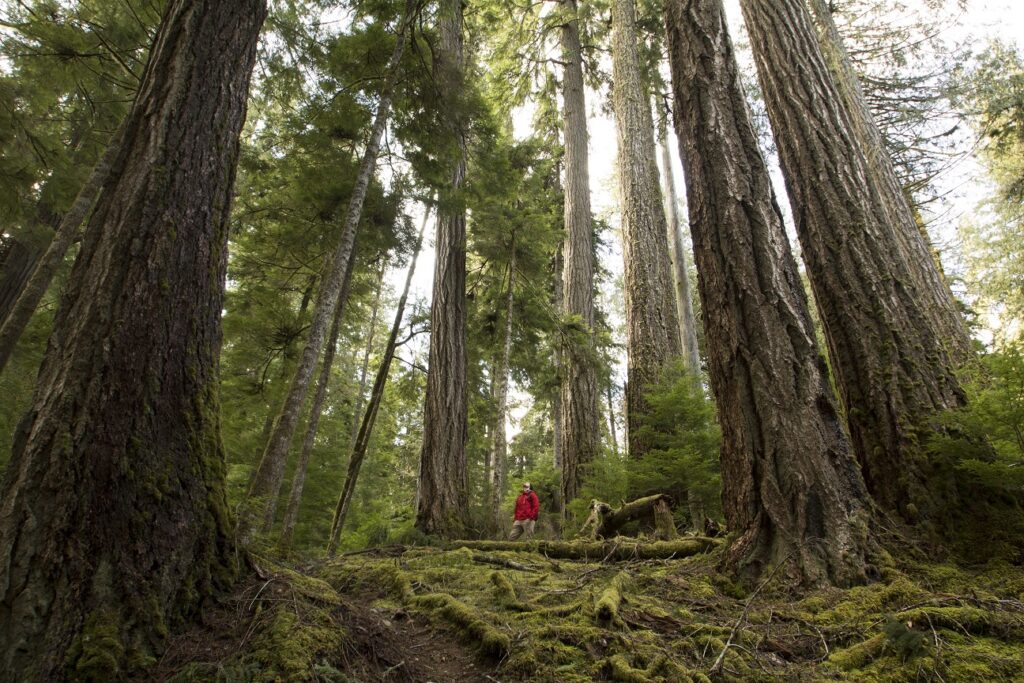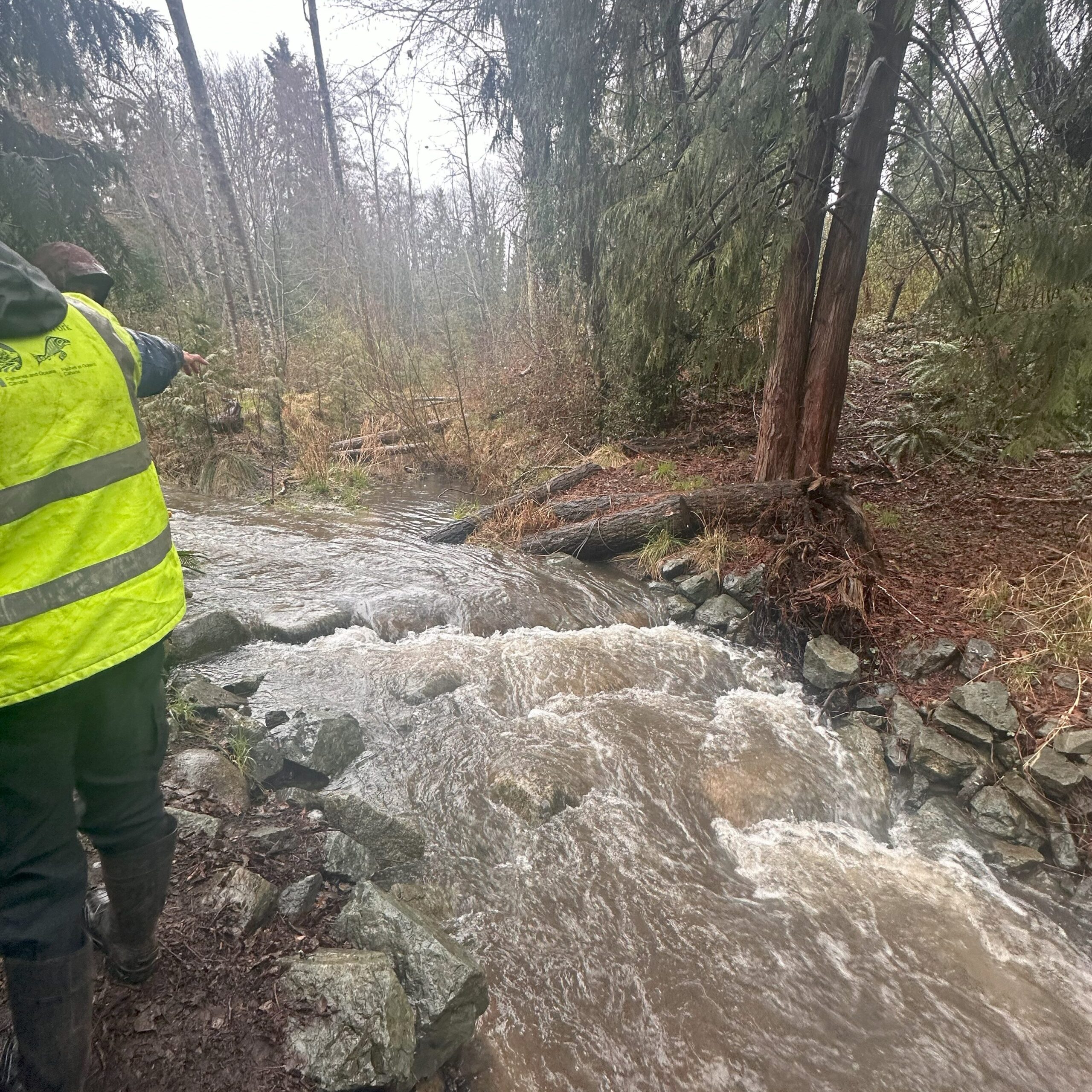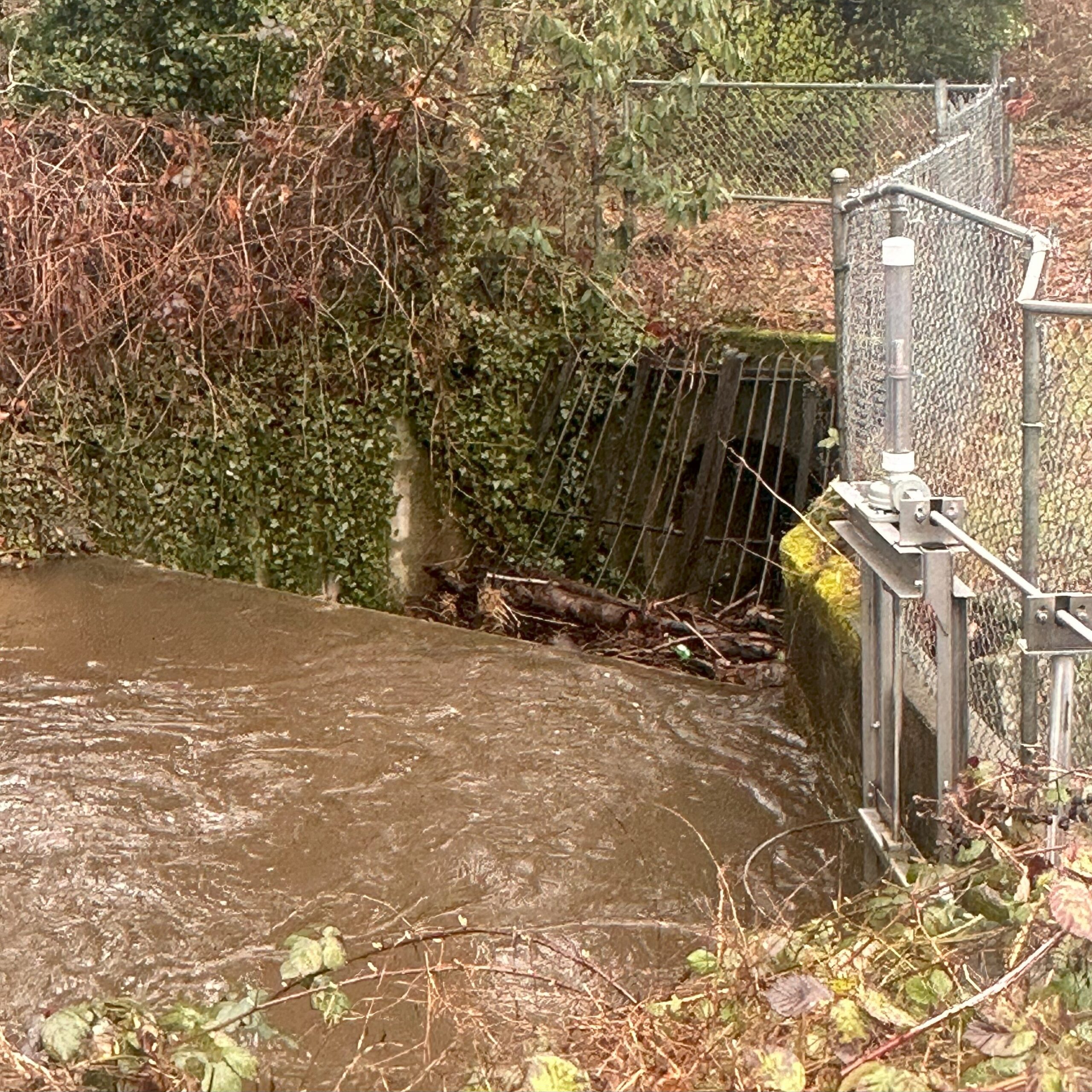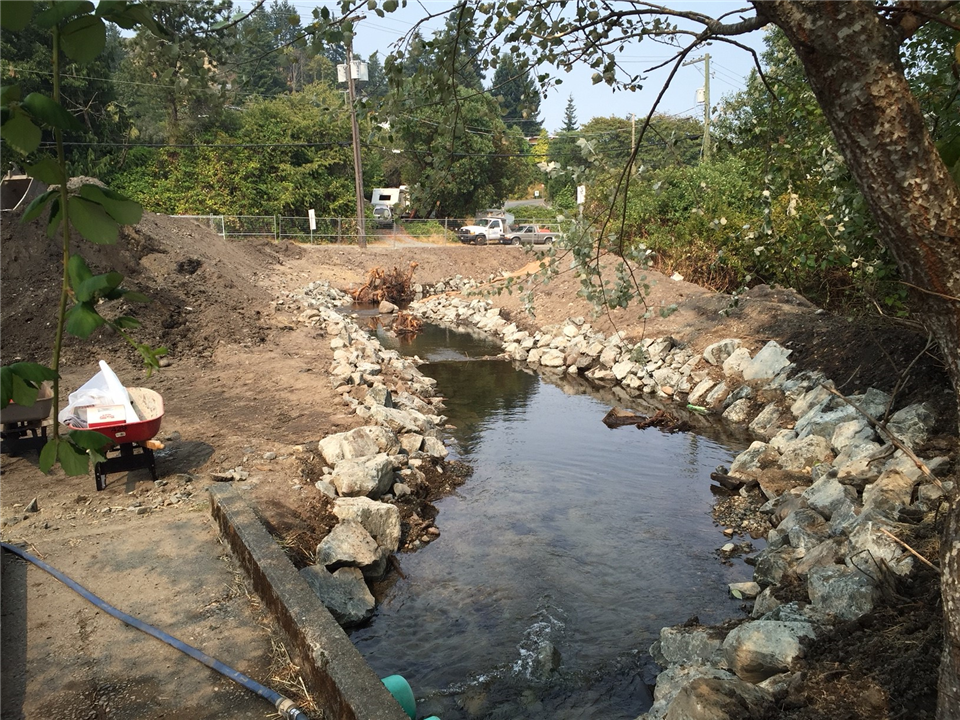Introduction
On Wednesday February 28, the GEOL312 class braved the harsh weather conditions to learn about a creek restoration project in Departure Bay area. The creek in question is the Departure Bay Creek. This creek winds its way through the residential neighbourhoods of the bay area and his home to many fish species such as coho, pink, chum, and steelhead. This water system has gone through the ringer since colonialism of the area, but the volunteer Streamkeepers are working hard to allow this stream to function properly as a habitat for the local fish species.
Background
The Departure Bay Creek in the past was a beautifully intricate natural creek that winded through humungous old growth cedars end entered the ocean as a marshy wetland that provided habitat and nutrients to many species. When colonialism came to the island this natural habitat was destroyed. Trees were harvested, the creek was redirected, and the wetland was drained and covered. Because of this, the habitat that the creek provided was almost completely destroyed. But luckily, over the past couple decades, a passionate group of volunteers have worked hard to restore what they can and create new possibilities for fish and other species.

Problems
The problems associated with the Departure Bay Creek revolve mostly around fish and their early life cycle. Listed below are issue that the past creek system had with regards to fish habitat.
- High sand sediment content: High levels of sand within the stream cause problems with Alevin due to them being unable to swim up through the sediments to get to the main stream flow. The sand in the stream is from an erroding glaciofluvial embankement upstream.
- Pollution: Nearby residences and roads allow for the transport of unfriendly pollutants. One new prominent pollutant is from degrading car tires, its called 6-PDDQ, and even low concentrations can be deadly to fish species.
- Aggressive Channeling: Past channeling created a consitent fast moving creek that did not allow fish to easily rest or reproduce.
Restoration
First nations groups, local government, and non-profit organizations have come together to resolve habitat issues at departure bay by implementing many different methods.
- Creation of Pools: pools allow fish to rest as well as allows organic debris and suspended sediment to settle.
- Oxygenation of Water: inclusions of small weirs in the stream bed increase levels of oxygen in water by essentially creating bubbles.
- Plantation of Native Species
- Addition of 2nd Channel: a small second channel was created to add other areas of habitat for small juvenille salmon. This channel has a much slower flow rate as well as more vegetation and cover which allows for salmon to hide from predators if need be.
- Bed Material: cobble sized rocks were placed in strategic areas of the creek in order to alter stream dynamics.




Conclusion
Departure Bay Creek is a great example of the level of care that should be placed on every creek or stream system. In the past, streams were seen as simply the movement of water, this movement could therefore be altered to fit the needs of the people in any way they saw fit. Today, the understanding that a stream is a dynamic system that provides habitat to many important species is being brought to the public through volunteers and non-profit organizations.


Leave a Reply